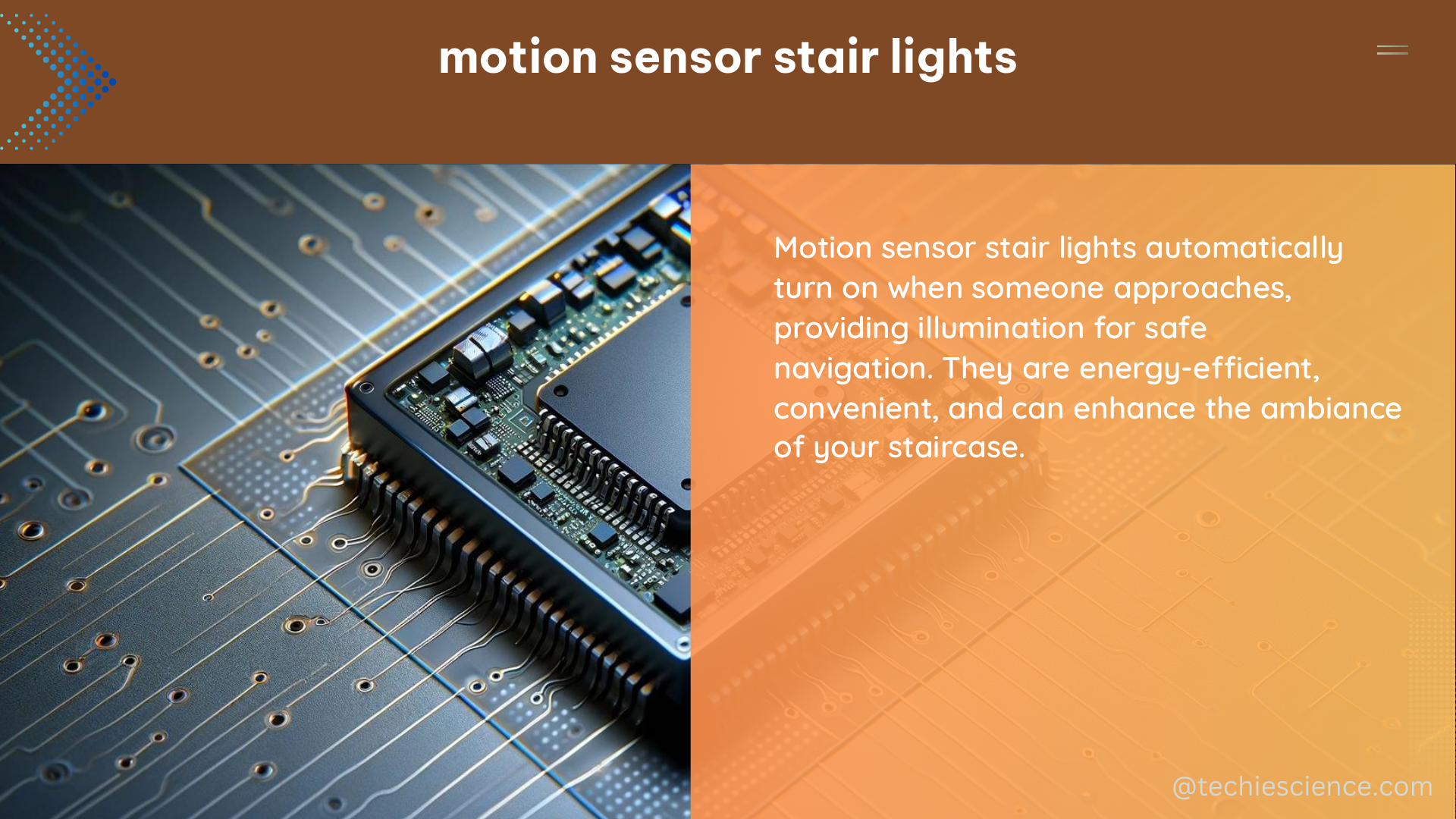Motion sensor stair lights are a popular and energy-efficient lighting solution for stairwells, hallways, and other areas where lighting is needed only when people are present. These lights use motion sensors to detect movement and automatically turn on, providing illumination for safe navigation while reducing energy consumption. In this comprehensive guide, we’ll dive deep into the technical specifications, installation process, and key considerations for DIY motion sensor stair light projects.
Understanding Motion Sensor Stair Lights
Motion sensor stair lights are designed to provide targeted illumination in areas where it’s needed most. These lights are equipped with motion sensors that can detect the presence of people within a specific range, typically 10-15 feet. When motion is detected, the lights automatically turn on, ensuring that the stairway is well-lit for safe passage. Once the motion is no longer detected, the lights will turn off, conserving energy and reducing unnecessary lighting.
Technical Specifications

Motion Sensor Type
The most common motion sensor types used in stair lights are:
-
Passive Infrared (PIR) Sensors: These sensors detect changes in infrared radiation, which is emitted by warm objects, such as the human body. PIR sensors are known for their reliable performance and energy-efficient operation.
-
Microwave Sensors: These sensors use radio waves to detect movement. Microwave sensors are less affected by environmental factors, such as temperature and humidity, making them a reliable choice for stair light applications.
Light Source
Stair lights can utilize various light sources, each with its own advantages:
-
LED (Light-Emitting Diode): LED bulbs are the most energy-efficient option, typically consuming 1-10 watts of power. They also have a longer lifespan, often lasting 25,000 to 50,000 hours.
-
Fluorescent: Fluorescent bulbs offer a higher lumen output, typically ranging from 700 to 2,600 lumens. However, they have a shorter lifespan compared to LEDs.
-
Halogen: Halogen bulbs provide a warm, incandescent-like light, but they are less energy-efficient and have a shorter lifespan than LED or fluorescent options.
Lumen Output
The lumen output of stair lights is an important factor in ensuring adequate illumination for safe navigation. The Illuminating Engineering Society (IES) recommends a minimum illumination level of 5 foot-candles (54 lux) for stairways. Typical lumen outputs for stair lights are:
- LED bulbs: 100-500 lumens
- Fluorescent bulbs: 700-2,600 lumens
Color Temperature
The color temperature of stair lights can affect the ambiance and visibility of the space. Most motion sensor stair lights have a color temperature range of 2,700-3,000K, which provides a warm, incandescent-like white light.
Dimming Capabilities
Some motion sensor stair lights offer dimming capabilities, allowing you to adjust the light output to suit your needs. Dimming can be controlled manually or automatically using a light sensor, which can further enhance energy savings.
Motion Sensor Stair Lights DIY Installation
If you’re interested in installing motion sensor stair lights yourself, follow these step-by-step instructions:
-
Choose the Right Motion Sensor: Select a motion sensor that meets your specific requirements, such as detection range, response time, and power consumption. Consider factors like the size of your stairwell and the desired coverage area.
-
Select the Appropriate Light Fixture: Choose a light fixture that is compatible with the motion sensor you’ve selected. Ensure that the fixture has the right lumen output and color temperature to provide adequate illumination for your stairway.
-
Install the Motion Sensor: Follow the manufacturer’s instructions to securely mount the motion sensor. Aim the sensor in the direction of the stairway to ensure optimal detection coverage.
-
Connect the Motion Sensor to the Light Fixture: Use the appropriate wiring to connect the motion sensor to the light fixture. Make sure the connection is secure and the wires are properly insulated to prevent any electrical hazards.
-
Test the System: Once the installation is complete, test the motion sensor stair lights to ensure they turn on and off as expected. Adjust the sensitivity of the motion sensor if necessary to achieve the desired performance.
Conclusion
Motion sensor stair lights are a practical and energy-efficient solution for illuminating stairwells and other high-traffic areas. By understanding the technical specifications, installation process, and key considerations, you can successfully implement a DIY motion sensor stair light system that enhances the safety and ambiance of your home or building.
References
- Lighting Design Lab – Motion Sensor Lighting Guide
- US Army Corps of Engineers – Design Manual for Lighting
- NOAA – Field Procedures Manual
- NREL – Energy Efficiency and Renewable Energy
- IDCEC – Continuing Education Unit List
- Home Depot – Motion Sensor Light Buying Guide
- DOE – Frequently Asked Questions about LEDs
- Lumens – LED Light Bulbs
- Home Depot – Light Bulb Color Temperature Basics
- Lowe’s – How to Choose Lighting Controls

The lambdageeks.com Core SME Team is a group of experienced subject matter experts from diverse scientific and technical fields including Physics, Chemistry, Technology,Electronics & Electrical Engineering, Automotive, Mechanical Engineering. Our team collaborates to create high-quality, well-researched articles on a wide range of science and technology topics for the lambdageeks.com website.
All Our Senior SME are having more than 7 Years of experience in the respective fields . They are either Working Industry Professionals or assocaited With different Universities. Refer Our Authors Page to get to know About our Core SMEs.